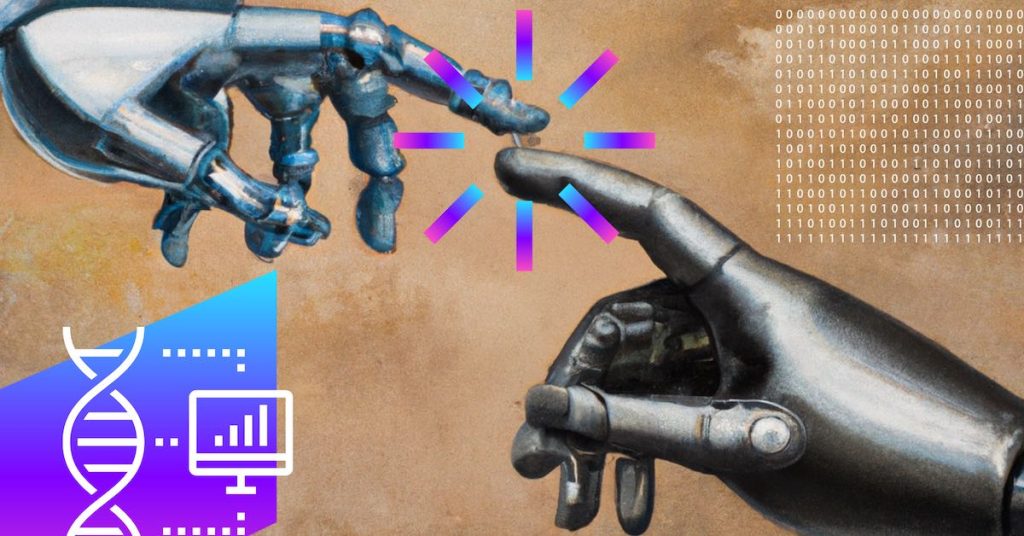
Even in the digital age, the FCC reports 19 million Americans do not benefit from equitable access to the internet. In rural America, that reality translates to an astonishing 25%. One of the downsides to technological innovation is that some people simply get left behind. So, just as crucial as using AI to solve a problem, we must also ensure it builds people up – we call that AI for the common good.
As a result of this inequity, some lack access to information or governmental support that would assist them in making informed decisions. In other cases, their jobs have been replaced by modern technology. So, what does that have to do with AI managers and developers? We must understand the principles of AI for the common good to fill the gaps with programs that enable all people equal access to technology’s benefits without exploitation. That is our highest calling!
For the next generation of workers, we must upskill them to learn and benefit from new technologies. For developers and managers, building a workforce for good means testing the technology properly to ensure it is not marginalizing people and communities.
In tackling the issue of AI for the common good, an excellent place to start is discussing the issue with a diverse group of organizations and stakeholders – across different governments and industries. These groups should also include specialists and experts representing governing bodies, special interest groups, NGOs, academia, technology, and manufacturing.
Cross-sectoral initiations create synergies between various AI implementations and solve problems by guiding research and development where they can be most useful. Further, these gatherings aid human resource development resulting from simultaneous connection to industry and education and help address demands for data scientists or algorithm developers with the expertise to drive recruitment.
But these collaborations will go even further, automating the development of fair algorithms based on groups and trends identified, designing and implementing fair algorithms with increased efficiency, specificity, and sustainability.
The goal is to offer AI products that send a message of trust and transparency to consumers while providing a value proposition that fulfills their needs.
Some governmental organizations are ahead of the curve in bringing various sectors together to find real solutions to promoting AI for the common good. These agencies have identified methods to encourage the flow of information between sectors. Their collaboration allows for more responsible forms of data collection and usage, identification of groups that may be at risk for harm by technology systems, and finding ways to mitigate the ill effects on those populations:
This organization collaborates with NYU’s Center for Urban Science and Progress and Columbia University’s Institute for Data Science Engineering to “create a platform for data sharing that spans the city.” The platform accesses data from multiple sources across agencies and external organizations and stores the data for analysis across agencies.
The result: The connection of data sources reduces the challenge of information silos that prohibit agencies from gaining a comprehensive perspective of what happens within them while enabling better communication among agencies and giving AI larger stores of data to improve decision-making, much of it available to the public unlike big data collected by private tech firms.
This group has laid out a cross-sector engagement plan that highlights the importance of certain factors in achieving the most favorable results. These have been adjusted to address ethical AI specifically by:
1. Investment that boosts the development of transparent AI infrastructure
2. Curate AI-ready dataset via a process that mitigates the level of bias it contains
3. Translational research that streamlines the process of transforming discoveries in AI more quickly into practice
o Develop K-12 curricula in AI to create an AI-skilled workforce
o Recruit and retain AI faculty, scientists, and technologist at secondary schools, colleges, and universities
4. Support and recruit the industry for designing and deploying quantum computing hardware and software
o Connect and financially support industry and academic actors to form AI and quantum computing teams
Hopefully, both examples will become a template for further exploration of how organizations can come together to understand and seek real solutions to promote AI for social good.
About 500 million people worldwide were unable to find adequate employment in 2019, with the number only increased since the onset of the pandemic. The root of the problem is a skills gap that results from rapid technology changes and the inability of unskilled workers to keep up with changes. As a result, there are far fewer workers with this new skill set than are needed.
Unemployment is a global crisis, and AI will only make the issue worse if steps are not taken to mitigate its negative impact on the workforce.
To reduce the tension between AI and the workforce, employee training methods should develop skills to engage with AI. For example, AI that replaces workers should be paired with plans to reskill or upskill workers to technicians equipped to run AI software. Reskilling requires 1) technology developed to innovatively enable users to adapt to workers’ ability and knowledge levels and 2) learning software that immerses users and creates an interactive, experiential, virtual environment that surpasses the traditional schoolroom experience.
AI for social good is about connecting people and spreading the wealth of knowledge and resources. With a concerted effort, those of us who manage or develop AI can make a difference, making sure workers have the proper skills to compete and ensuring the technology they’re using is not harmful to them. It’s the right thing to do, and ultimately, it’s our responsibility as developers and managers to make sure everyone has access to every advantage technology can provide.
Interested in learning more about how to develop ethical AI? Our firm can help you put best practices in place to better serve your customers? Contact us! Quickly develop ethical AI that is explainable, equitable, and reliable with help from our complete AI IaaS. Sign up for FREE diagnostics.
Comments